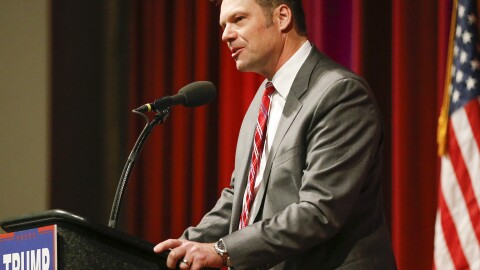As U.N. Secretary General Ban Ki-moon prepares to hand the baton to his successor, Portugal's Antonio Guterres, on New Year's Day, he is lamenting "unfinished business" in a key U.N. doctrine meant to stop genocidal acts.
Ban has described Syria as a "gaping hole in the global conscience." The U.N. fears that South Sudan is on the brink of genocide and that "fires are still burning" in Yemen, Mali and the Central African Republic.
"The reason, clearly — lack of solidarity, global solidarity," Ban told reporters at his final news conference. "Unfortunately, [U.N.] member states have shown some stepping back from their firm agreement on Responsibility to Protect."
The concept, endorsed by the world body in 2005 just before Ban became U.N. secretary general, says that world powers need to step in to save civilians from genocide when local governments are unable, or are carrying out the atrocities.
The Obama administration was an early advocate of R2P, as it is often called, setting up an atrocities prevention board and telling the U.S. Holocaust Memorial Museum in 2012 that "preventing mass atrocities and genocide is a core national-security interest — and a core moral responsibility — of the United States of America."
The Obama administration invoked R2P in 2011 in Libya, when then-leader Moammar Gadhafi was threatening to crush a revolt in Benghazi and show "no mercy, no pity" to rebels.
"Those interventions, they drag on, and they often morph," says Cameron Hudson, who runs the Simon-Skjodt Center for the Prevention of Genocide at the Holocaust Museum. What started as an intervention to save civilians in Benghazi "morphed into what essentially became regime change, and now essentially the dissolution of the Libyan state."
Libya has been in turmoil since then, and the U.S. Ambassador Chris Stevens, who had been an envoy to the opposition during the war, was killed in Benghazi on Sept. 11, 2012, along with three other Americans.
Hudson fears the Obama administration "overlearned" the lessons from Libya, making it more hesitant to act in the face of mass atrocities in Syria.
Obama told reporters earlier this month that he spent many hours in meetings with his advisers, but ultimately decided that "unless we were all-in and willing to take over Syria," the United States was going to run into problems.
"Everything else was tempting, because we wanted to do something and it sounded like the right thing to do," the president said. "But it was going to be impossible to do this on the cheap."
The U.S. intervention to fight the Islamic State in Syria and in Iraq in some ways that started as a humanitarian intervention, says Hudson, after ISIS slaughtered religious and ethnic minorities.
"We've seen an intervention to save Yazidis on the mountaintop morph into a much broader effort to roll back an ISIS threat all across northern Iraq and Syria," Hudson told NPR. "So the concept [of R2P] has been used to begin that engagement; it has not been a useful frame for how we conclude or continue to sustain those kind of engagements."
Some worry that has led global powers to focus more on the terrorism threats to them in such engagements, rather than protecting civilians from genocide.
At an emotional Security Council session, a Yazidi woman who had been held by ISIS as a sex slave appealed to the world body to stay focused on the plight of religious minorities and start documenting and preserving evidence of war crimes.
"I don't understand how there is no court that can prosecute the perpetrators of the crimes against Yazidis or an independent body to investigate them," Nadia Murad told the council. "I don't understand why the corpses of my murdered mother and brothers still lie in mass graves, unprotected and unexamined."
President-elect Donald Trump has said little about how his administration will respond to atrocities being carried out in conflicts around the globe. He has, though, made clear that in Syria he would combat ISIS by working with Russia, which has backed the Assad regime — itself accused of committing war crimes.
Copyright 2021 NPR. To see more, visit https://www.npr.org. 9(MDA5NTM4MTIyMDE0MTg3NDc2MTVlZjdmNQ001))






